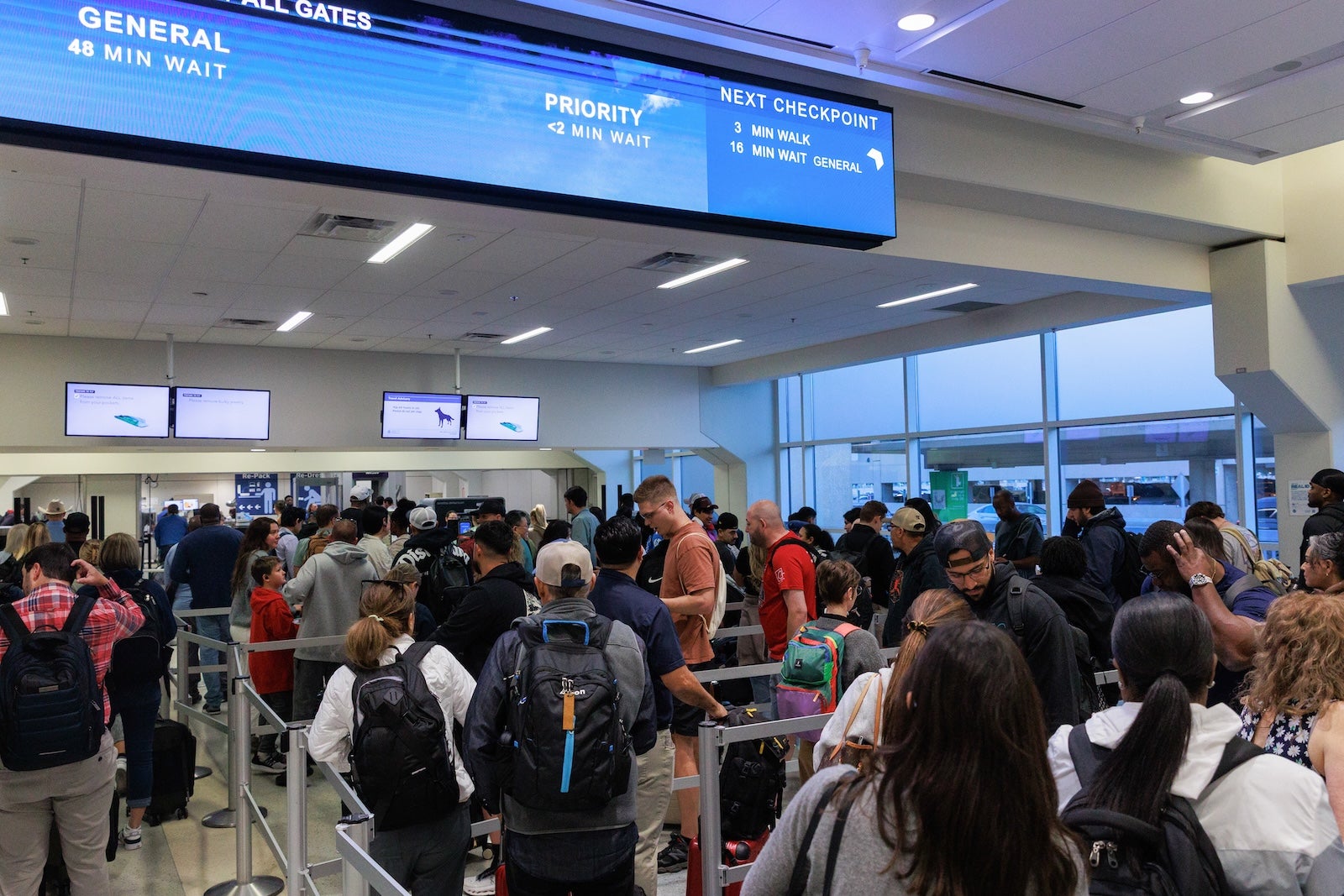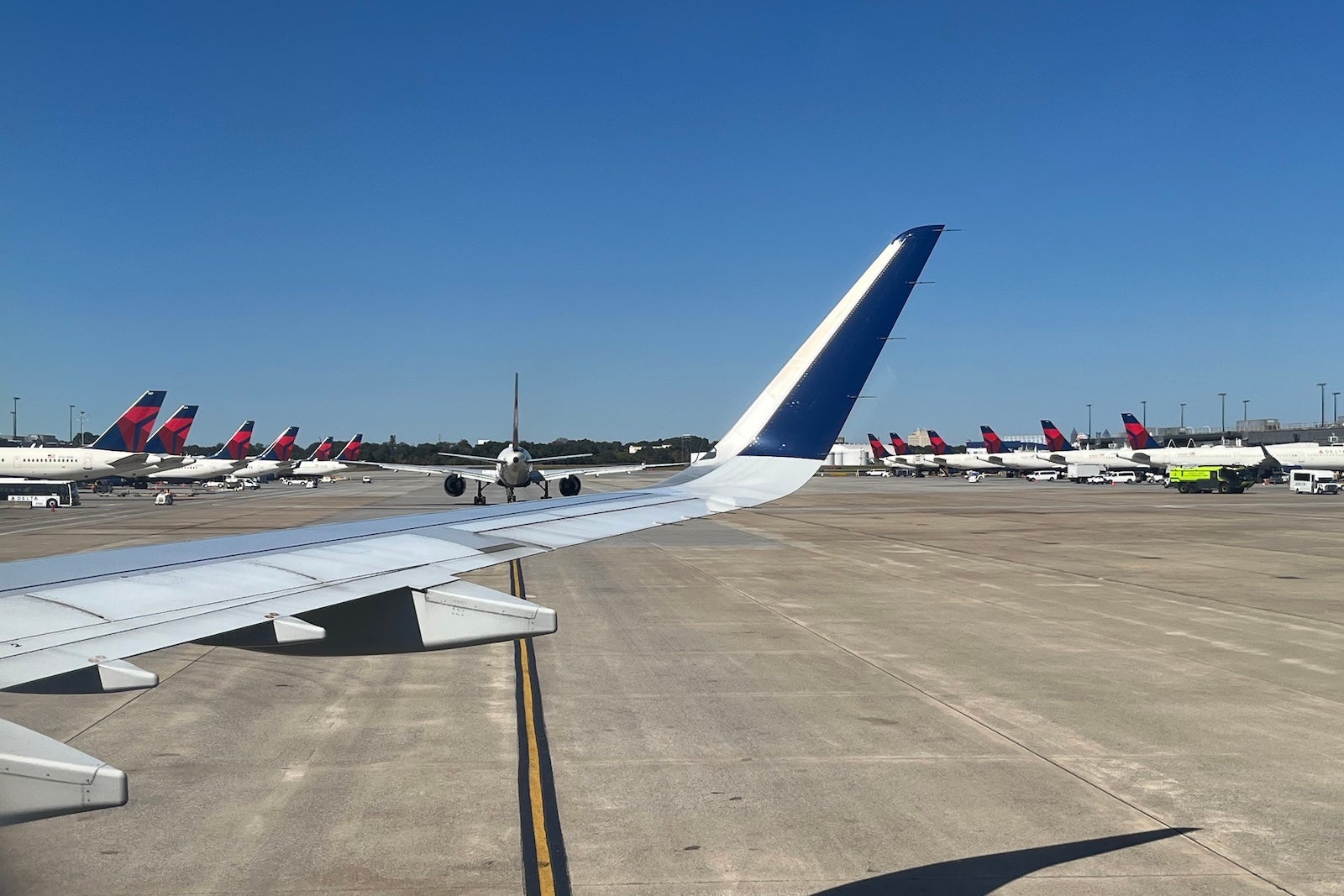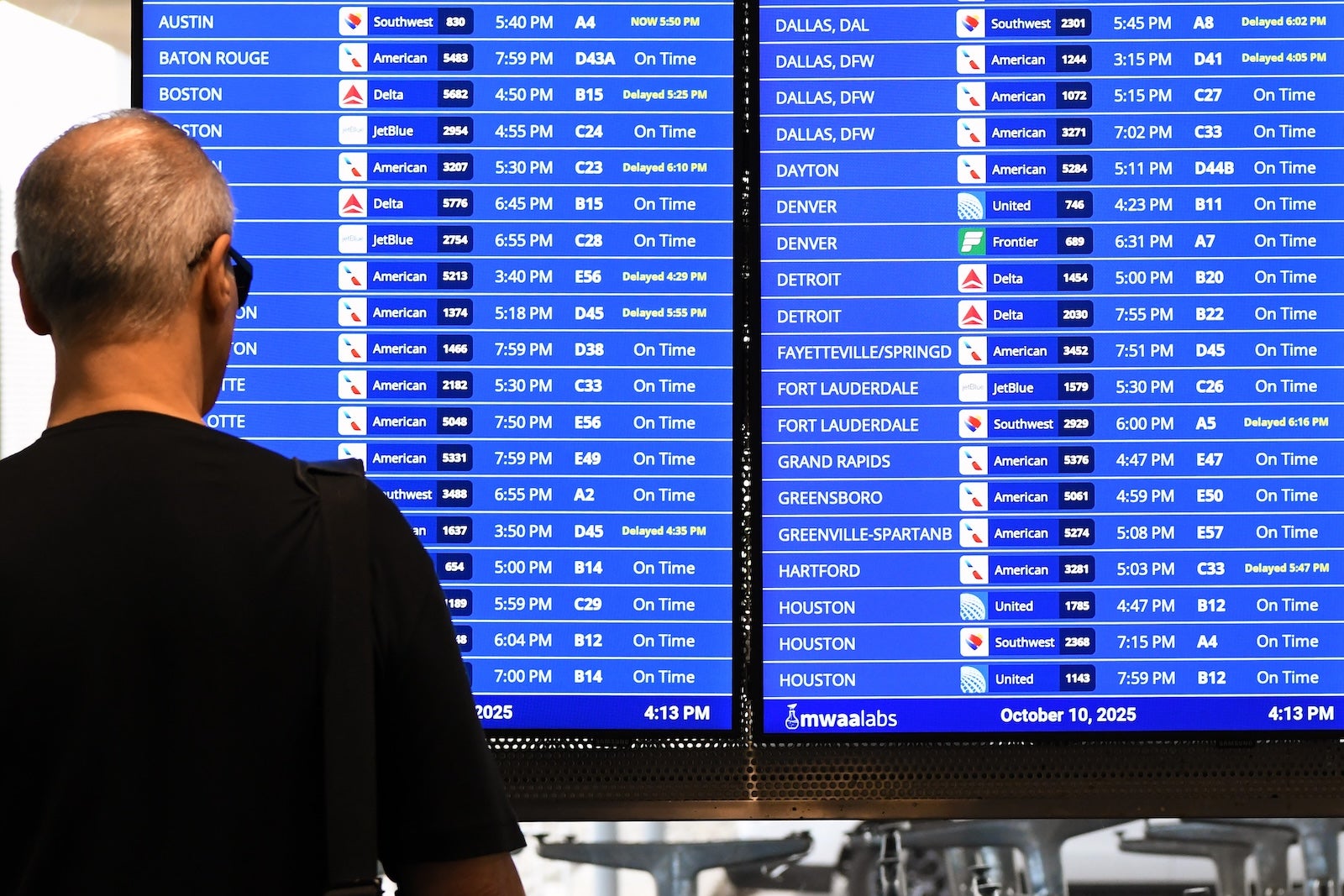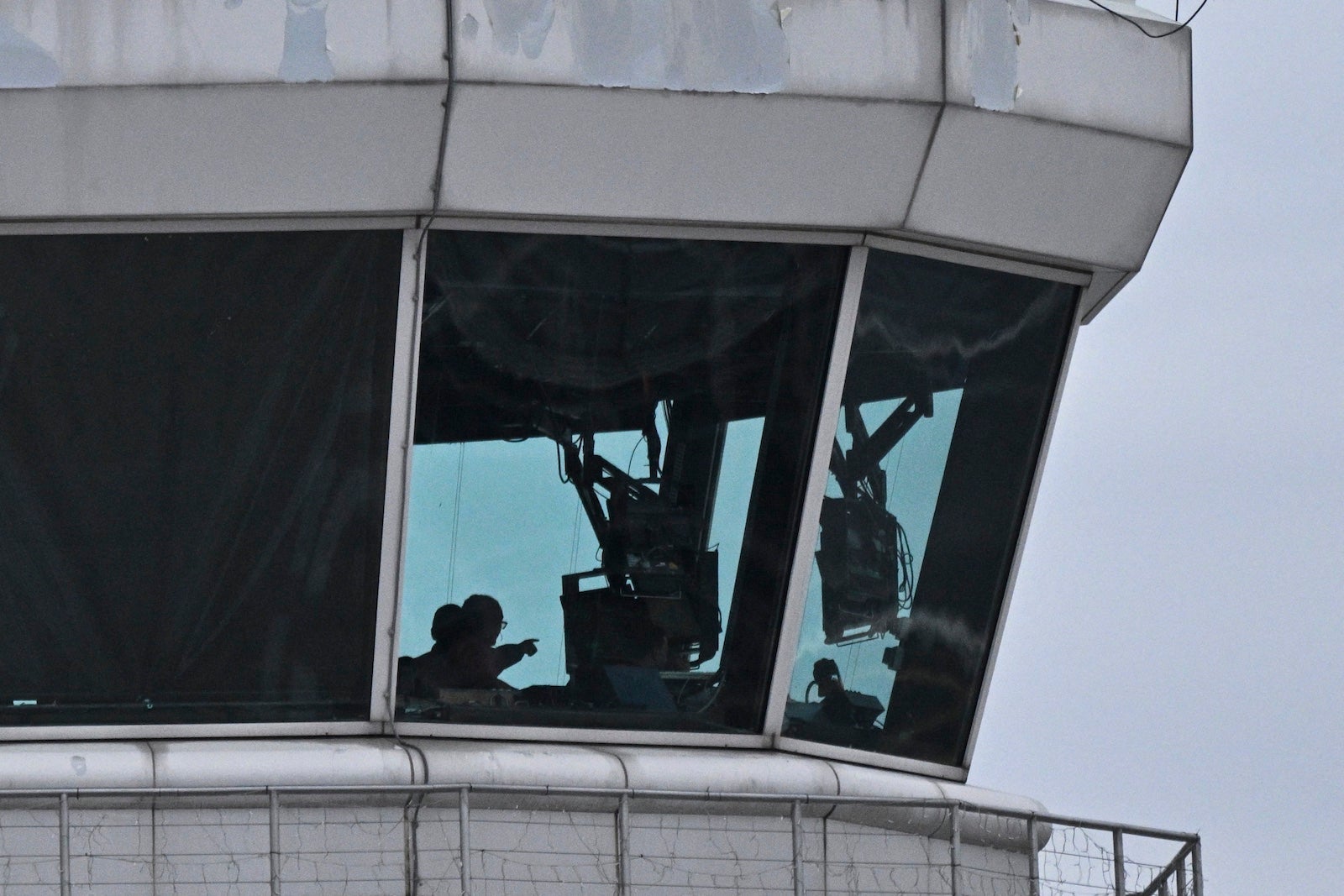It’s been more than a month since the federal government entered a partial shutdown. And at airports across the country, the travel woes are quickly mounting.
Flight delays surged this weekend as the Federal Aviation Administration reported a growing number of air traffic controllers calling off work after weeks without pay.
Meanwhile, wait times topped three hours at security checkpoints in one of the nation’s largest cities, leading to chaotic scenes inside the terminal at Houston’s George Bush Intercontinental Airport (IAH).
“We’ve seen problems at L.A., in Dallas, in D.C., Boston, Atlanta,” Secretary of Transportation Sean Duffy said Sunday on CBS’ “Face the Nation.” “And so I think it’s only going to get worse.”
Since Friday, more than 18,000 flights have been delayed, according to data from FlightAware.
The disruptions began to climb Friday night after the FAA reported staffing shortages at nearly half of its top air traffic control facilities. In the critical New York City region, around 8 in 10 workers were absent at one point.
The FAA expected more understaffed air traffic facilities Monday, including at the center that runs operations for Newark Liberty International Airport (EWR), where average delays topped an hour by noon Monday.
Ever since the shutdown began Oct. 1, there had been widespread fears that weeks without pay could eventually lead to a surge in callouts at both the FAA and the Transportation Security Administration — something that snarled air travel during the last prolonged shutdown in early 2019.
Government and airline industry leaders insist these staffing shortages won’t jeopardize travelers’ safety.
Reward your inbox with the TPG Daily newsletter
Join over 700,000 readers for breaking news, in-depth guides and exclusive deals from TPG’s experts
“We will stop traffic,” Duffy said Sunday. “We won’t let that happen.”
That could mean longer taxiing to take off, longer waits to land — in the air and on the ground — and backups at TSA checkpoints.
Related: US government is shut down: Here are the travel impacts

What about TSA checkpoints?
While TSA backups haven’t yet hit an inflection point nationally, travelers encountered drastic wait times this weekend at Houston’s largest airport — problems that continued Monday, with three-hour security checkpoint backups, according to the airport’s website.
IAH officials Monday warned travelers to arrive at the airport at least three hours ahead of their flight, after the TSA had to close all but two checkpoints (Terminal A and Terminal E) Saturday.
United Airlines is the dominant carrier at the airport, where it operates a major hub. United passengers were asked to drop their baggage at Terminal C and then proceed to Terminal E for screening.
Fortunately, security waits remained minimal at other airports across the country. On Sunday, as the TSA screened some 2.7 million passengers, average waits in the standard security lanes hovered around five minutes. Waits in the TSA PreCheck lanes averaged around two minutes.
However, “Occasional delays at some security checkpoints are to be expected,” one TSA spokesperson said. “The longer the shutdown goes on, the more severe the impact on our TSA workforce.”

How airlines are handling the disruptions
In addition to providing meals for critical aviation workers, airlines are implementing changes to help travelers navigate airports more smoothly.
Delta Air Lines said its employees were assisting with logistics at TSA checkpoints to free up certified TSA screeners to process customers. The airline also noted that its corporate employees were assisting customers with moving through the lobby at its Hartsfield-Jackson Atlanta International Airport (ATL) megahub.

Delta closes special business-class security entrances
One significant change some Delta customers will notice: Due to TSA staffing concerns, the airline has temporarily closed its semiprivate security checkpoints for Delta One customers at New York’s John F. Kennedy International Airport (JFK) and Los Angeles International Airport (LAX).
Tips for traveling during the government shutdown
With no clear indication of when the government shutdown might end, here are some tips for flying — whether you’re traveling this week or booking holiday flights.
Get to the airport earlier
The TSA continues to recommend that travelers arrive at the airport at least two to 2 1/2 hours before their flight. That’s roughly in line with its normal guidance.
However, as we’ve seen in Houston in recent days, at certain airports, waits can end up being far longer — and with little notice.
My advice: Start by checking to see if your airport has a page on its website that tracks security wait times. For example, at IAH as of noon EST Monday, the airport’s webpage showed average backups of 180 minutes (three hours) — which means you’d want to be there at least four or even five hours before your flight.

Beyond that, I’d simply plan to get to the airport earlier than you otherwise would. Keep in mind, the TSA does have an app that shows checkpoint wait times. However, due to the shutdown, it’s not being updated regularly.
It’s official: Travelers no longer have to remove shoes at TSA checkpoints

Book nonstop flights or longer connections, if you can
If you’re booking travel for the coming weeks, I’d opt for a nonstop flight if possible.
Flight cancellation rates in October were remarkably low — just 0.3% of all flights aboard U.S. carriers, according to FlightAware. That’s better than what we saw in September, when the government was open.
Delays, however, remain a very real concern.
If you’re not able to fly nonstop, I’d avoid that tight 40-minute connection if you can. After all, a 45-minute delay becomes a much bigger problem if it causes you to miss your connecting flight.
Prepare for a longer wait on the plane
Load up the iPad with more shows, download that extra podcast and bring a bottle of water. The biggest impact customers are likely to experience from air traffic control-related delays is longer taxi times or additional time spent in a holding pattern before landing.

Have the necessary supplies, entertainment, battery life and refreshments so you’ll be ready if a two-hour flight turns into 3 1/2 hours on board the plane.
Stay glued to your airline’s app
Watch for chances to switch to a new itinerary or take advantage of a travel advisory if an airline gives you extra flexibility. If trouble pops up, you may be able to make all the necessary changes with a few taps in its mobile app.
Read more: Flight canceled or delayed? Here’s what to do next
Book with a credit card that has travel insurance
Airlines aren’t likely to foot the bill if you get stranded because of the government shutdown. That means you’d likely be on the hook for that unexpected hotel night or dinner out if you get delayed overnight.
This is where a travel credit card that carries travel insurance protections can come in handy, and help you get reimbursed for unplanned travel delay costs — something to consider if you’re booking holiday travel.
Looking ahead
These mounting air travel and shutdown concerns come less than four weeks before the start of the Thanksgiving travel rush.
Keep in mind, the Sunday after Thanksgiving is usually one of the busiest travel days of the entire year.
“We are expecting a record holiday travel season; however, if the shutdown continues much longer, Americans will have to pack their patience and be prepared for more delays, unfortunately,” Airlines for America, a lobbying group for the top U.S. carriers, said in a statement Thursday.
As of Monday, the U.S. Travel Association reported the shutdown has cost the American tourism industry at least $4.6 billion in lost revenue.
Related reading: